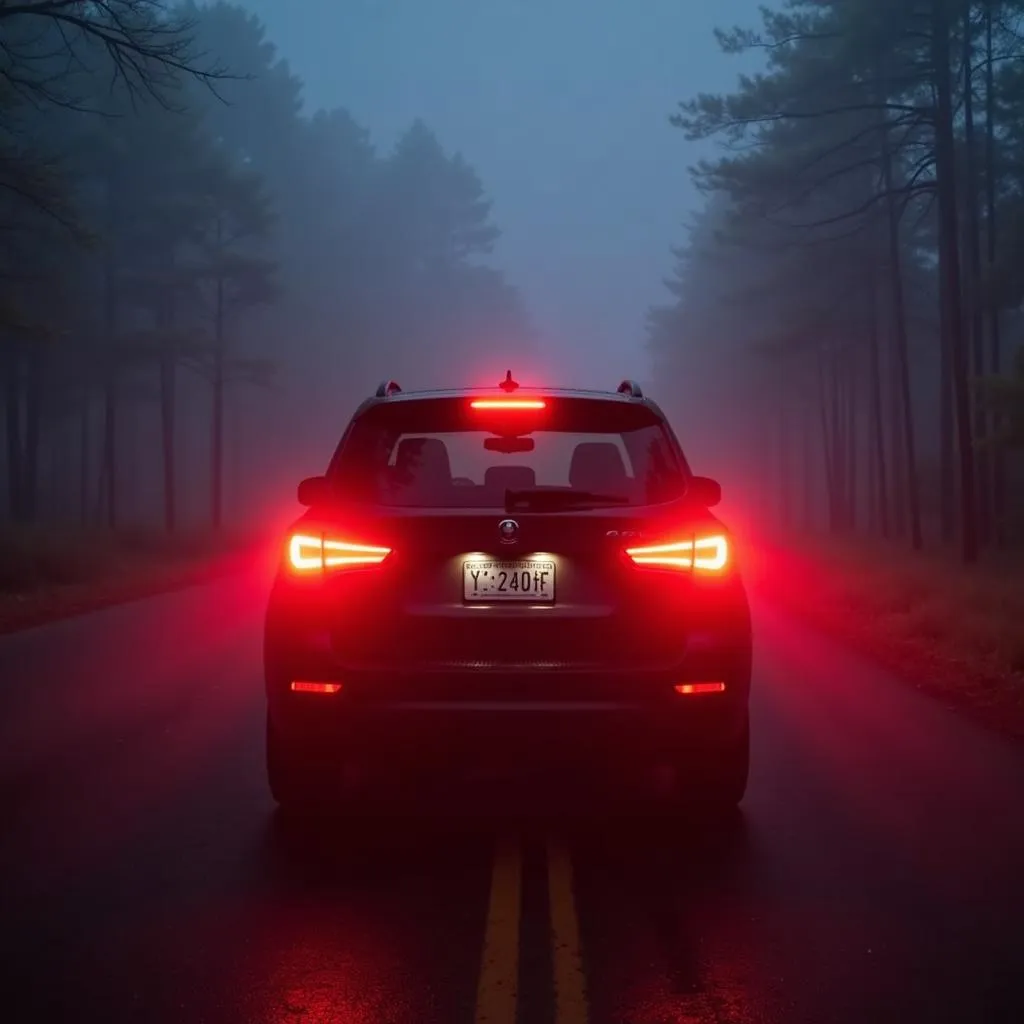Brake lights are a crucial safety feature on any vehicle, instantly signaling to other drivers that you’re slowing down or coming to a stop. But have you ever stopped to think about what color they are and why that specific hue was chosen?
Decoding the Red Glow: Why Brake Lights Are Red
While it might seem obvious that brake lights are red, there’s actually a fascinating scientific and psychological reason behind it.
The Physics of Color and Visibility:
- Wavelength: Red light has the longest wavelength in the visible light spectrum. This means it can travel through air more efficiently than other colors, especially in conditions like fog, rain, or dust.
- Scattering: Longer wavelengths like red are less likely to be scattered by particles in the air. This is why the sun appears red during sunrise and sunset when light has to travel through more of the atmosphere.
The Psychology of Red:
- Attention-Grabbing: Red is universally associated with danger, warning, and urgency. It’s a color that naturally attracts our attention, making it ideal for signaling a potential hazard on the road.
- Quick Reaction Time: Studies have shown that humans have a faster reaction time to the color red compared to other colors. This split-second advantage can be crucial in preventing accidents.
 Red brake lights in foggy conditions
Red brake lights in foggy conditions
A Global Standard for Safety
The use of red for brake lights isn’t just a coincidence; it’s a globally recognized safety standard. International regulations mandate that brake lights must emit a bright red light, ensuring consistency and understanding across borders. This standardization is vital for preventing confusion and accidents, especially in areas with high traffic density and diverse vehicles.
Beyond Red: Advancements in Brake Light Technology
While red remains the standard, advancements in automotive lighting technology are enhancing brake light effectiveness:
- LED Lights: LED brake lights are brighter and illuminate faster than traditional incandescent bulbs, providing an even greater margin of safety.
- High-Mounted Brake Lights: Positioned at a higher point on the vehicle, these lights offer improved visibility, especially for drivers approaching from behind.
- Adaptive Brake Lights: These intelligent systems can adjust the intensity of brake lights depending on the force of braking, providing a clearer signal of the driver’s intentions.
These innovations demonstrate the ongoing commitment to improving road safety by enhancing the visibility and effectiveness of brake lights.
FAQs About Brake Lights
Q: Can brake lights be any other color besides red?
A: No, international regulations mandate that brake lights must be red to ensure global consistency and understanding.
Q: Why are some cars equipped with a third brake light?
A: The third brake light, often called a high-mounted brake light, is positioned higher on the rear windshield or trunk for increased visibility.
Q: Do brake lights have to be a specific brightness?
A: Yes, brake lights are required to meet specific brightness standards to ensure they’re visible during both day and night.
Have more questions about car safety or want to learn about what color goes first when jumping a car? Explore our other informative articles:
Driving with Confidence: The Importance of Brake Light Maintenance
Understanding the purpose and function of brake lights is just the first step; ensuring they’re always in optimal working condition is crucial for your safety and the safety of others on the road. Regularly check your brake lights to make sure they’re clean, bright, and functioning properly. If you notice any issues, have them addressed by a qualified mechanic immediately.
